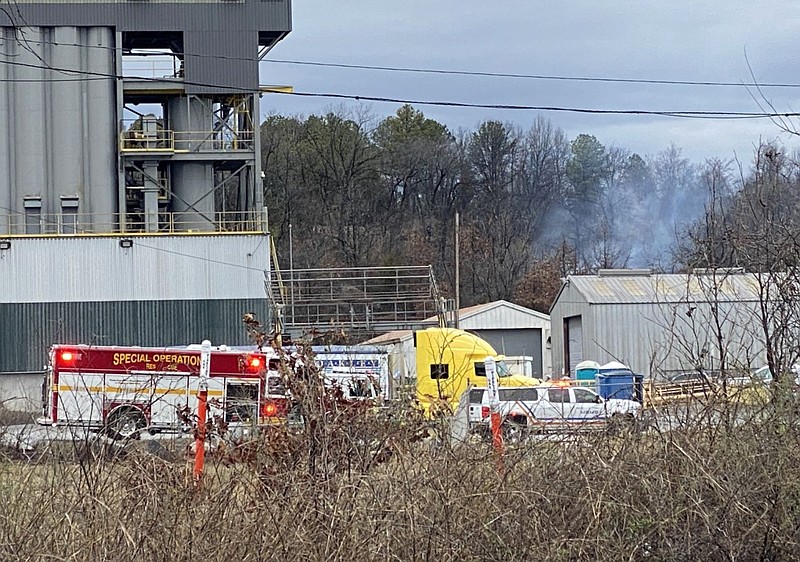Little Rock's 911 center director says the first calls about a plane crash that killed five people went unanswered, making it an example of why her improvement plans are important.
When the two-engine plane went down south of the Bill and Hillary Clinton National Airport/Adams Field on Feb. 22 amid noontime storms, first responders quickly knew it was serious, director Juana Green said.
But calls about the crash came in with a flow of other calls from around the capital city, she said. The first three calls about the crash didn't get through to an operator immediately. Instead, call center employees returned the calls.
KARK4 first published the details of the 911 calls, obtained from Little Rock police via an Arkansas Freedom of Information Act request. The center has not been under police control since January 2022.
"We got a call from this number, is everything OK?" an operator can be heard asking.
The first caller, an employee at Dassault Falcon Jet, reported seeing the plane crash in a fireball.
"The airplane took off in crazy weather and it ended up just rolling into the ground," the caller said.
A dispatch log indicates that the call was received at 12:02 p.m., less than a minute after the incident was entered in the dispatch system. Firefighters at the airport had simultaneously reported the crash and began responding, Green said.
At 12:03, a call-taker returned the call of another person at the airport who witnessed the crash and spoke with a third caller who had seen the crash around 12:05. It took between one and two minutes for employees to return those calls, Green said.
The crash site was in the Pulaski County sheriff's office's jurisdiction, and Green said its dispatchers may have gotten other calls. She didn't want to call the response to the crash typical, but said it went smoothly and wasn't unusual because of the regular volume of calls and the number of employees.
Even if she filled all 11 seats in the call center with call-takers, Green said, a 12th caller would always have to wait or be called back. Five or six people typically work in the center at a time, she said, and while all of them can take calls if needed, some work as dispatchers or supervisors.
"It's just the nature of the beast," said Green, who has worked in emergency communications for 20 years, including in her native New Orleans.
Green doesn't want residents to lose faith in the 911 center because operators can't immediately take their calls, she said. Emergency call centers across the country are also swamped with calls.
"That may not mean much to our residents because we are concerned with our 911 center -- I get it," Green said.
It's not the first time concerns have been expressed about the system. Answering questions from residents about call wait times, police Chief Heath Helton on Jan. 12 said Green "came into some challenges" when she took over the system.
Green said she's reorganized the way the emergency communications center works. When she showed up, some employees weren't even aware there were national standards for response time, and now the call center is on track for national accreditation.
Green switched employees from eight-hour shifts to 12-hour shifts, she said, supplanting four-hour mandatory overtime that came with those shorter shifts and implementing four-day work schedules.
Another big change will be the move to a standardized training regimen that ensures all the call-takers are asking the same questions and getting the same information. It helps cut down on dead air, Green said, and provides a consistent metric for employee performance.
Finally, Green said she hopes to move to automatic call distribution, which means that instead of hearing the phone ring and having to manually pick it up to take the call, the next call in line will automatically drop into the operator's headset, shaving time off their response.
On Feb. 25, a few days after the plane crash, six new call center employees completed their training, Green said. That was half of the dozen people that started the training program. The next application period was set to open this month, and their training would begin in May, Green said.
She said she is optimistic that the new procedures and a continued influx of new employees can help ease residents' woes with the 911 system in Little Rock.
